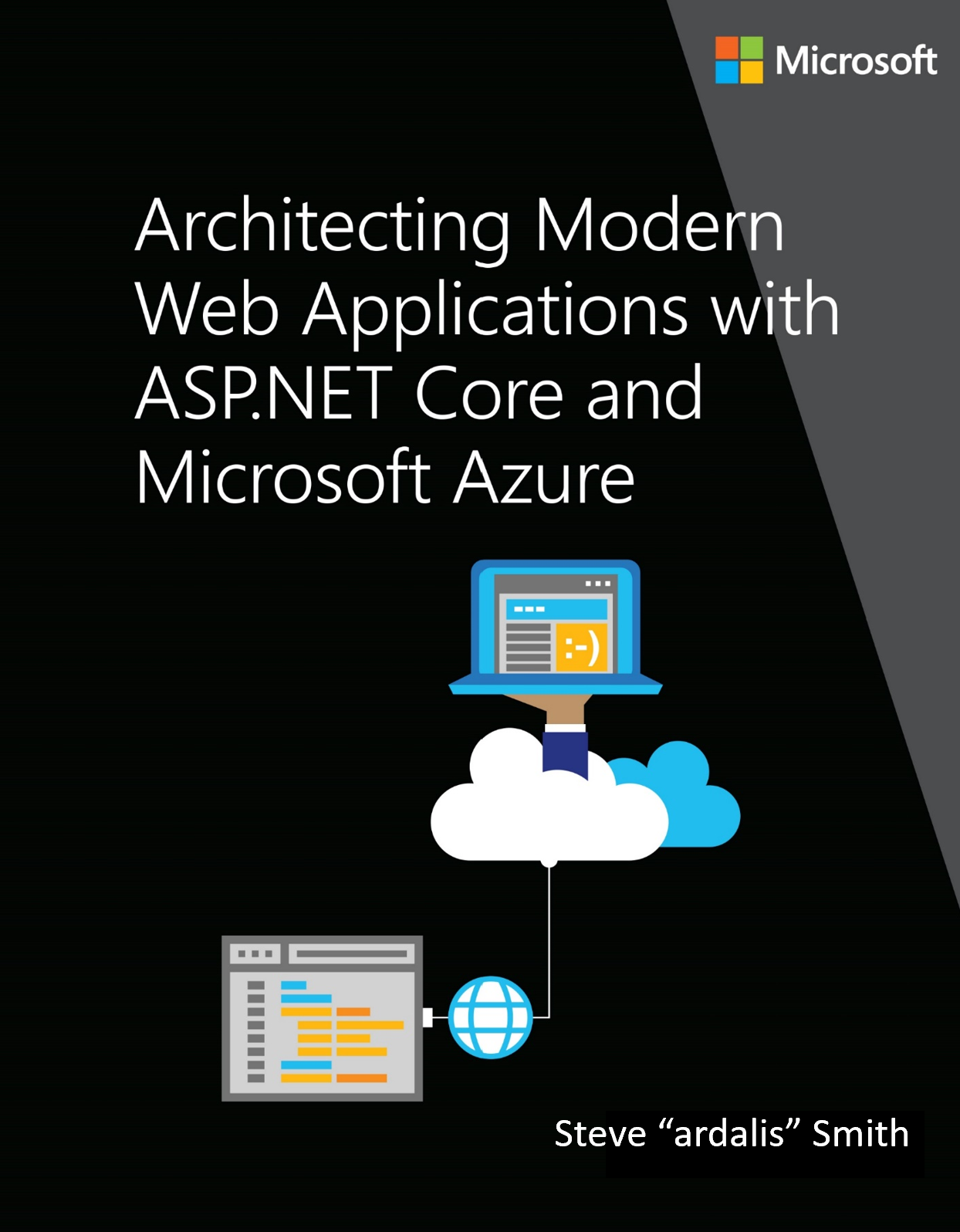Architect Modern Web Applications with ASP.NET Core and Azure

EDITION v8.0 - Updated to ASP.NET Core 8.0
Refer changelog for the book updates and community contributions.
PUBLISHED BY
Microsoft Developer Division, .NET, and Visual Studio product teams
A division of Microsoft Corporation
One Microsoft Way
Redmond, Washington 98052-6399
Copyright © 2023 by Microsoft Corporation
All rights reserved. No part of the contents of this book may be reproduced or transmitted in any form or by any means without the written permission of the publisher.
This book is provided "as-is" and expresses the author's views and opinions. The views, opinions, and information expressed in this book, including URL and other Internet website references, may change without notice.
Some examples depicted herein are provided for illustration only and are fictitious. No real association or connection is intended or should be inferred.
Microsoft and the trademarks listed at https://www.microsoft.com on the "Trademarks" webpage are trademarks of the Microsoft group of companies.
Mac and macOS are trademarks of Apple Inc.
The Docker whale logo is a registered trademark of Docker, Inc. Used by permission.
All other marks and logos are property of their respective owners.
Author:
Steve "ardalis" Smith - Software Architect and Trainer - Ardalis.com
Editors:
Maira Wenzel
Action links
This e-book is also available in a PDF format (English version only) Download
Clone/Fork the reference application eShopOnWeb on GitHub
Introduction
.NET 8 and ASP.NET Core offer several advantages over traditional .NET development. You should use .NET 8 for your server applications if some or all of the following are important to your application's success:
Cross-platform support.
Use of microservices.
Use of Docker containers.
High performance and scalability requirements.
Side-by-side versioning of .NET versions by application on the same server.
Traditional .NET 4.x apps can and do support many of these requirements, but ASP.NET Core and .NET 8 have been optimized to offer improved support for the above scenarios.
More and more organizations are choosing to host their web applications in the cloud using services like Microsoft Azure. You should consider hosting your application in the cloud if the following are important to your application or organization:
Reduced investment in data center costs (hardware, software, space, utilities, server management, etc.)
Flexible pricing (pay based on usage, not for idle capacity).
Extreme reliability.
Improved app mobility; easily change where and how your app is deployed.
Flexible capacity; scale up or down based on actual needs.
Building web applications with ASP.NET Core, hosted in Azure, offers many competitive advantages over traditional alternatives. ASP.NET Core is optimized for modern web application development practices and cloud hosting scenarios. In this guide, you'll learn how to architect your ASP.NET Core applications to best take advantage of these capabilities.
Version
This guide has been revised to cover .NET 8.0 version along with many additional updates related to the same "wave" of technologies (that is, Azure and additional third-party technologies) coinciding in time with the .NET 8.0 release. That's why the book version has also been updated to version 8.0.
Purpose
This guide provides end-to-end guidance on building monolithic web applications using ASP.NET Core and Azure. In this context, "monolithic" refers to the fact that these applications are deployed as a single unit, not as a collection of interacting services and applications. In some contexts, the term monolith may be used as a pejorative, but in the vast majority of situations a single application is much easier to build, deploy, and debug than an app composed of many different services, while still achieving the business requirements.
This guide is complementary to ".NET Microservices. Architecture for Containerized .NET Applications", which focuses more on Docker, microservices, and deployment of containers to host enterprise applications.
.NET Microservices. Architecture for Containerized .NET Applications
- e-book
https://aka.ms/MicroservicesEbook - Sample Application
https://aka.ms/microservicesarchitecture
Who should use this guide
The audience for this guide is mainly developers, development leads, and architects who are interested in building modern web applications using Microsoft technologies and services in the cloud.
A secondary audience is technical decision makers who are already familiar ASP.NET or Azure and are looking for information on whether it makes sense to upgrade to ASP.NET Core for new or existing projects.
How you can use this guide
This guide has been condensed into a relatively small document that focuses on building web applications with modern .NET technologies and Azure. As such, it can be read in its entirety to provide a foundation of understanding such applications and their technical considerations. The guide, along with its sample application, can also serve as a starting point or reference. Use the associated sample application as a template for your own applications, or to see how you might organize your application's component parts. Refer back to the guide's principles and coverage of architecture and technology options and decision considerations when you're weighing these choices for your own application.
Feel free to forward this guide to your team to help ensure a common understanding of these considerations and opportunities. Having everybody working from a common set of terminology and underlying principles helps ensure consistent application of architectural patterns and practices.
Send your feedback
This book and related samples are constantly evolving, so your feedback is welcomed. If you have comments about how this book can be improved and you're reading this book on <learn.microsoft.com>, use the Feedback section at the bottom of the page:
As highlighted in the preceding screen capture, the feedback section allows you to submit feedback for:
- This product: using the .NET product feedback form.
- This page: using a GitHub issue template with the page details.
If you're reading this book as a PDF, you can submit feedback by creating a new .NET Docs: GitHub issue or by using the .NET Architecture eBooks: GitHub issue template.
References
- Choosing between .NET and .NET Framework for server apps
https://learn.microsoft.com/dotnet/standard/choosing-core-framework-server

